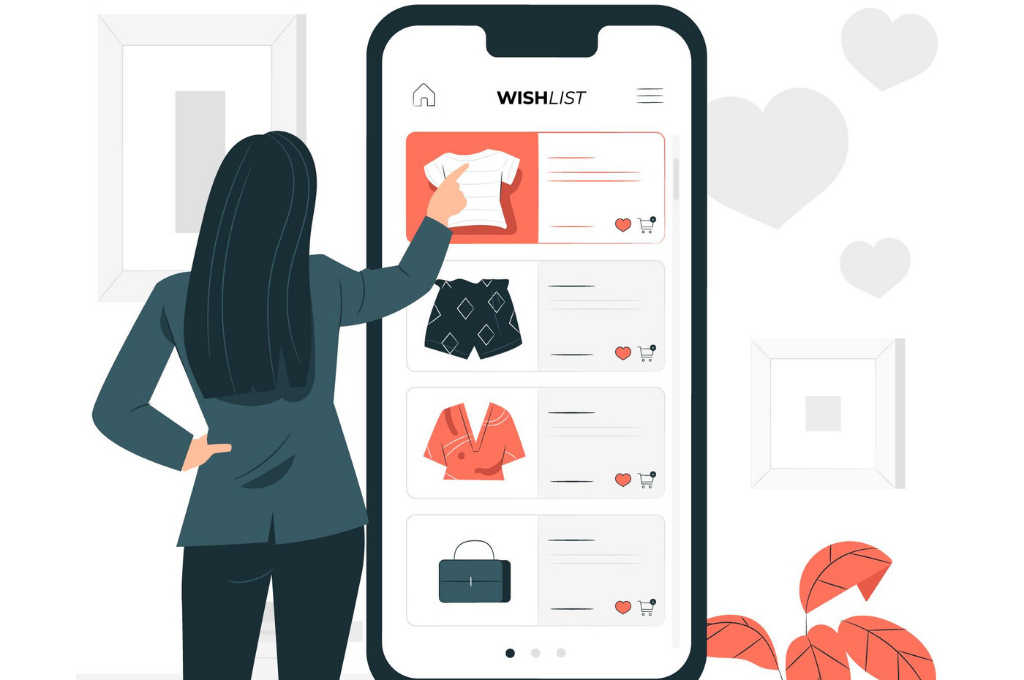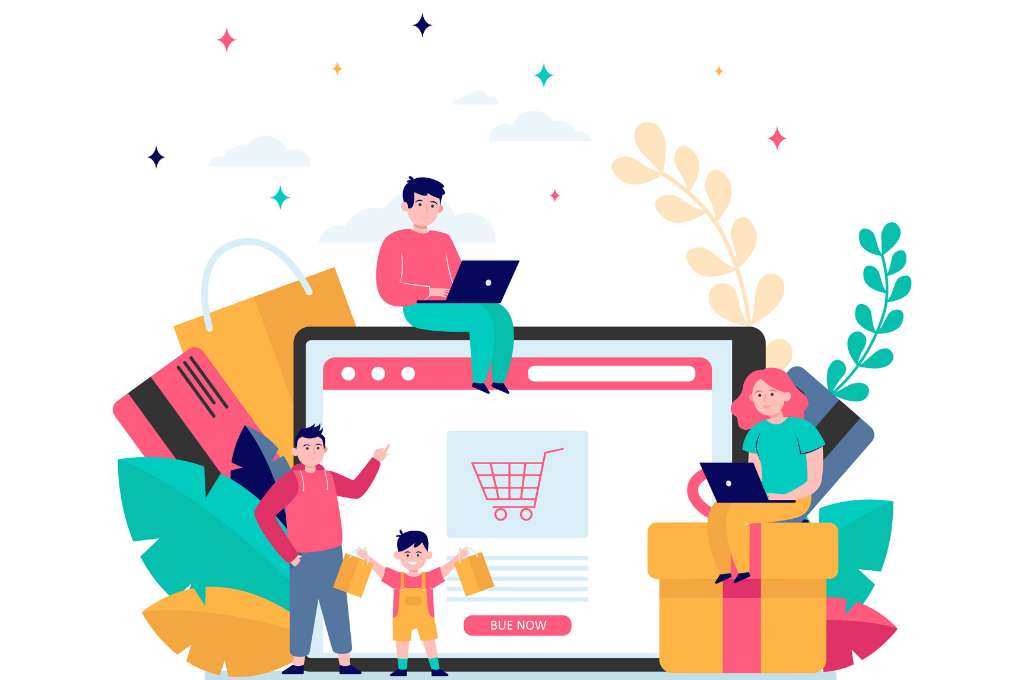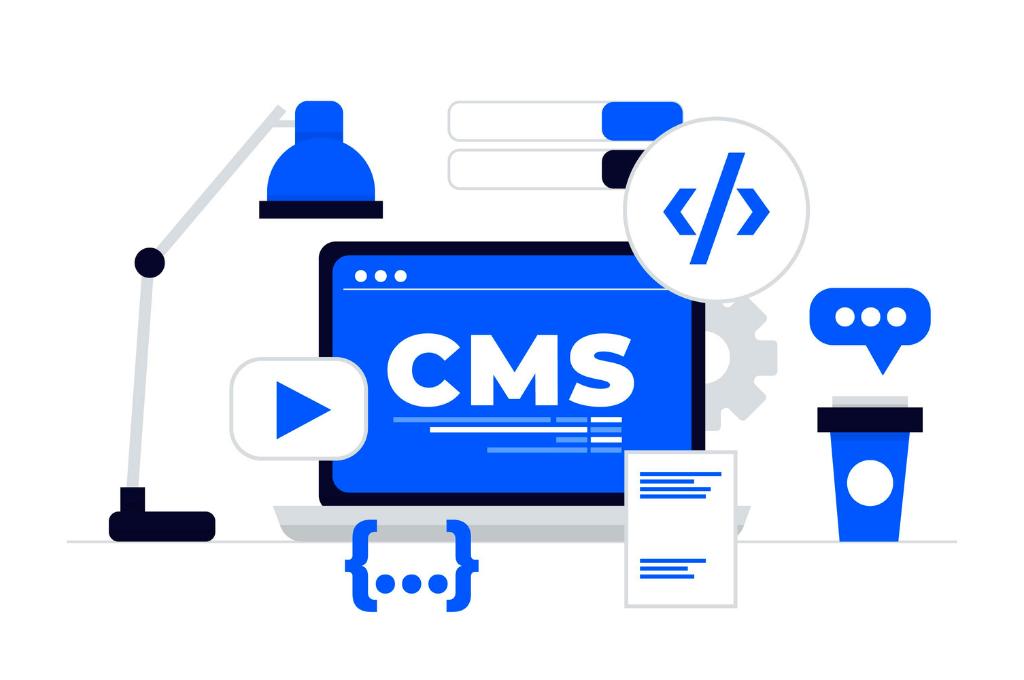eCommerce has been on the rise globally for some time now. Amazon, Etsy, and other eCommerce websites have shaped the sector’s rise by giving customers an online shopping experience. Innovative business models have further fueled its growth.
The pandemic affected the fortunes of many businesses across sectors. The Online retail sector grew, ensuring the safety of the customer and digital commerce for businesses.
The convenience of shopping from any location and unique benefits, including comparison shopping,multi-vendor leverage online retail as a lucrative sales channel for startups and existing businesses alike.
Furthermore, technological advancements and the evolution of the eCommerce ecosystem have made a seemingly difficult task of building an eCommerce website achievable by simpler, viable, and more affordable steps.
Read ahead to find out how building an eCommerce business in 2022 is easier than it seems.
Online Retail-Opportunity For The Present, Imperative For The Future
According to Optinmonster, “93.5% of internet users globally have made an online purchase”. eCommerce growth has been continuously fostered by the penetration of faster internet, the evolution of devices, and other factors.
An emerging trend that is reshaping the eCommerce industry is the implementation of a daily delivery management system with end-to-end visibility. This system enhances customer experience by providing real-time updates and ensuring a transparent delivery process, which is crucial in today’s fast-paced online shopping environment.
Online platforms are maturing to offer near-identical shopping experiences as offline retail. The future holds promise with better utilization of AI, ML, VR, and others.
Innovative business models that create new transactions in the eCommerce space promise to carve out a niche in the industry. These models are easier to implement with access to a broader audience online.
Some of the many unique eCommerce features that let businesses market their products better are integrated social media platforms, analytics to understand buyer behavior.
The flourishing industry also opens up better opportunities to invite investors’ interest.
Opportunities In The Ecommerce Industry
The opportunity for the next big business idea is always on the horizon, waiting to be discovered and implemented to perfection. Some guiding principles help in recognizing such opportunities. Let’s discuss some such practices that help in identifying the next big online success story.
Identify An Industry Niche
The idea conceptualized and implemented by Etsy years back is still a blueprint for eCommerce success. Online retail doesn’t limit your business’ reach, making it possible for you to target a market with an exclusive offering.
Aggregating Small Retailers Or Manufacturers
Providing an online platform for SMBs 一 retailers, manufacturers, or warehouse owners 一 that collectively offer value products multi-vendor, to the identified customer base.
Service-Based MarketPlace
A marketplace that connects service providers to their customers, offering functionalities like calendar-based booking, can provide value to the end customers, especially in the post-pandemic era.
Innovative Business Models
StockX, a resale marketplace for coveted items and accessories such as limited-edition sneakers, has been evaluated at $4bn. The marketplace has successfully implemented a unique business plan.
Innovative business models such as StockX create new transactions in the online space, opening up a niche in eCommerce and inspiring other such startups.
Time, A Decisive Factor To Ecommerce Success
eCommerce is becoming an increasingly competitive space. A unique business plan will lose the advantage of starting early if the same plan has already been implemented.
The total time involved in the go-to-market strategy involves conceptualizing the plan, developing the website, setting it up, and marketing it.
Out of all these components, the time consumed in developing the website is significant but controllable. Engineering an eCommerce website from scratch involves not just time but essential resources as well.
The way around it is by utilizing turnkey eCommerce solutions to build your website. Top eCommerce software is a readymade solution that we can use to engineer contemporary online platforms, significantly reducing the overall go-to-market time.
eCommerce Software-Gaining The Time Advantage And More!
The underlying success of established online retail platforms such as Amazon, Etsy, and others has been examined, and that analysis has been used to power the best eCommerce software.
So what you get is a ready-made solution that has been developed to let you launch an eCommerce website with the necessary features and functionalities that can power a successful online retail business in a shorter time and with lesser costs.
Leading eCommerce software also comes with a partner ecosystem that opens up endless possibilities for your business. Pre-integrated business APIs, offered with the eCommerce software, adds essential functionalities like payment gateways, fulfillment providers, tax management, marketing analytics, and more to the online business.
As discussed above, eCommerce software has multiple benefits. But they vary in many parameters, some of which we have discussed below.
Differentiating Parameters Of eCommerce Software
There are numerous aspects of an online business. The requirements of each company vary accordingly. It may be challenging to choose the right fit for your business unless you identify and understand the parameters that underpin online retail websites. We have discussed some such vital factors that are detrimental to eCommerce success below.
1. SaaS, Open-Source, And License-Based Software
Software as a service or SaaS-based software is cloud-hosted and offered via subscription plans. The business does not need to avail of hosting services, and it is a part of their subscription package. On the other hand, the company. never owns the software; instead, it uses it until we pay the subscription fee. Moreover, the business is dependent on the software provider for any customizations needed. Some examples of SaaS-based software are Shopify, BigCommerce, and others.
Open-Source software is available for free download, allowing businesses to use them as per their needs. Being free, they are not offered any services bundled alongside. The company will have to identify a partner custom eCommerce services provider to tailor these solutions. Magento, Prestashop are some of the most popular open-source solutions.
License-based software offers complete ownership of the software via a one-time license fee. The business has the independence to choose any hosting provider. The license for use generally comes bundled with services. These solutions are also more affordable. Yo! Kart, CS-Cart are prime examples of quality License based solutions.
2. Multivendor MarketPlace Solutions And Online Store(Single-Vendor) Software
Multivendor marketplaces are like Amazon, Etsy, Adobe Stock, and others. The market owner has admin privileges and invites multiple sellers to sell on its platform to the buyers. Online marketplace owners may not necessarily have an inventory or services to offer to the buyers. They just provide the platform for business between the sellers and their customers. Marketplace solutions help to build such online marketplaces.
On the other hand, eCommerce stores like IKEA, apple store, Burrow, and others allow businesses to sell their inventory online. Online store software helps build retail stores. The admin owns the store and sells products or services.
3. Technical Support And Customization Services
Most eCommerce software lets businesses launch an online business without the need to deploy a technical team. This is why technical support is a quintessential part of eCommerce software.
Moreover, the website may need customizations to tailor the software as per the needs of the business. eCommerce solutions backed by affordable customization services 一 offer a one-stop solution for all needs.
4. Clean UI/UX
A buyer has multiple options for making an online purchase in the competitive online retail space. A clean and perceptible buyer journey makes for a reliable shopping experience returning higher conversions for the eCommerce website.
5. eCommerce Features
Many essential eCommerce functionalities are achieved by partnering with third-party service providers. Shipping fulfillment or payment gateways are some examples of such services. The third-party service providers offer business APIs that need to be integrated. Customizable eCommerce software allows convenient integration of such business API.
Moreover, some eCommerce solutions come with many requisite business APIs pre-integrated out of the box, saving both time and resources.
6. Ease Of Management
Building and managing the store can be time-consuming and labor-intensive, eating up into the working capital of a business. eCommerce software that comes with intuitive features that ease the process of building and managing the website saves time and resources for the online business.
Top eCommerce solutions get most of the listed parameters right, hence their popularity. Discussed hereunder are the best eCommerce software.
Top eCommerce Solutions
Find listed below the eCommerce software that can provide an apt platform for a quality eCommerce website.
1. Yo!Kart
Yo! Kart is a secure and scalable multi-vendor eCommerce marketplace solution. The LAMP software stack is customizable, allowing businesses to tailor their website to suit their business plan. It is a standalone multivendor solution out of the box.
Yo! Kart has been built and backed by Agile teams, resulting in a robust solution that has powered quality eCommerce websites for clients all across the globe, receiving impressive user reviews and ratings. It has also featured in business publications like INC, Forbes, The Telegraph, and more.
The eCommerce software offers pre-integrated APIs out of the box, including 20+ payment methods, Shipstation for order fulfillment, Avalara & TaxJar for convenient sales tax compliance, Inuit Quickbooks for accounting, and many more.
Yo! Kart also comes with one year of technical support along with free installation.
Pros:
- Ready mobile apps for Android and iOS
- Progressive Web Apps are also available.
- License based and offers an impressive list of features and services along with the base package
- 1 Year technical support by Agile Team.
Cons:
- Limited support for free themes.
- Paid updates
Pricing:
The license for Yo! Kart is available in two inclusive packages. GoQuick for $1299 ($300 off at the time of writing this article) and GoCustom for $6999
2. CS-Cart
CS-Cart is another popular standalone multivendor marketplace software. One can use it to build robust and secure eCommerce websites. It is license-based and available for a one-time payment.
CS-Cart comes with an impressive list of features, especially in the more expensive plans. It supports 50+ payment systems and offers features like customer cart tracking and more.
The multivendor software features 200+ design themes to change the look and feel of your store.
SMBs have used CS-Cart across the world to build quality eCommerce websites. The software has won awards from Finances online, software suggestions, and more.
Pros:
- Support for 50+ payment systems
- Built-in designing tools and 200+ themes out of the box
- Free support is offered based on the license opted for.
- Regular feature updates up to 12 months.
Cons:
- Support is expensive.
- The more expensive packages are richly featured.
3. Growcer
Growcer is a secure and customizable marketplace software explicitly engineered for building online grocery marketplaces on a hyperlocal model. Additionally, Liquor, funeral products, e-Pharmacy, and more are other products that can be sold on a Growcer-based online platform.
Growcer is offered as both a standalone multivendor marketplace solution and online store software. The software houses advanced localization and geo-fencing capabilities.
It eases business operations by providing pre-integrated business API to streamline billing, shipping, payments systems, and more.
A delivery management app featuring routing, calling, and order catalog management is part of Growcer. It also facilitates delivery time slots creation to increase the efficiency of business operations and enhance the buyer experience.
Pros:
- 20+ popular and safe Payment systems offered pre-integrated
- Supports multiple revenue streams
- One-time payment or flexible payment options
- One-year free technical support & Free installation
- Available as both 一 multi-vendor marketplace software and online store solution
Cons:
- Updates are paid.
- Limited support for free themes.
Pricing
The pricing for online store software is as follows: GoQuick for $499, GoCustom for $4499, GoUnlimited for $4999. Prices for the License for Multivendor marketplace solution vary and depend upon the services opted alongside the software.
4. Shopify
Shopify is a leading SaaS-based online store software that lets entrepreneurs and SMBs launch an eCommerce store to sell their inventory or services. 24X7 technical support offers the convenience of timely customer care to business owners from all parts of the world.
Shopify is offered a 14-day trial that allows testing of the software to judge the aptness. The software provides you with paid themes that can change the look and feel of the online store.
Pros:
- Shopify Payments 一 Shopify’s payment system is pre-integrated.
- Intuitive and Easy to use.
Cons:
- Shopify is SaaS-based, which means overheads for the business and, further no lifetime ownership.
- For any customizations to your store, you will have to contact Shopify.
Pricing:
Pricing for Shopify is as follows:
- Basic Shopify $29/month
- Shopify $79/month
- Advanced Shopify $299/month
Shopify for enterprises, Shopify Plus costs start from $2000/per month.
5. Yo!Rent
A top rental marketplace software, Yo!Rent supports both renting and selling revenue models. It is engineered for entrepreneurs considering launching an online marketplace for industries with high renting demands such as luxury clothing, furniture, construction equipment, recreational vehicles, boats, and party equipment. Yo!Rent features an advanced booking calendar that facilitates the management deliverables in accord with a timeline.
Yo!Rent is a ready-made solution available as both an online marketplace and eCommerce store software. Yo!Rent features an admin dashboard and a separate dashboard for sellers (in the case of a multi-vendor marketplace solution). Yo! Rent is equally suitable for both B2B and B2C business models.
Pros:
- Advanced booking calendar.
- Multi-level subscription management.
- 15+ popular and safe Payment systems offered pre-integrated.
- Support for retailing, selling, and RFQ with the option of enabling or disabling each of these modes.
- Available as both 一 multi-vendor marketplace software and online store solution
Cons:
- Updates are paid. Although there are comprehensive additions in each update, they are not free of cost.
- Limited support for free themes.
Pricing:
Yo!Rent comes in both single-vendor and multi-vendor versions. The license for lifetime ownership of Yo!Rent depends on the services availed alongside the ownership License and is available upon the request for a quote.
6. Magento
Magento is an open-source eCommerce software with intuitive drag and drop capabilities for building an online store. Adobe acquired this software in 2018. It is free to download, first t any customization or technical support is paid for. There is also a paid version known as Magento Commerce which is offered with technical support and development.
Magento’s popularity stems from engaging eCommerce experiences. Being open-source, Magento has the support of a large online community. Many third-party developers and organizations also work on Magento extensions and themes, some available on the internet for free.
Pros:
- Magento comes with three payment gateways out of the box.
- Open Source-community
- Good design options
- Magento resources library
- Independence of customizations
- Good UI/UX
Cons:
- It can get expensive after all customizations are done, suitable for enterprises.
- Technical support is paid.
- To customize Magento, you will need to identify the right Magento certified developer with eCommerce expertise.
- Installation can be confusing.
Pricing
Magento is open-source and free to download. However, any customizations required will cost extra. On the other hand, Magento commerce is available for $1998/mo.
7. WooCommerce
WooCommerce is available as an extension to WordPress. It has the same robust architecture as the popular website builder.
Woocommerce is offered both an open-source version and a SaaS-based solution, Woocommerce subscriptions, giving entrepreneurs and SMBs the versatility to choose between the solution that best suits their business needs.
The SaaS-based solution comes with a refundable annual fee along with the monthly recurring subscription fee. It is best suited for subscription-based products or services.
Woocommerce offers multiple plugins and themes, some are free, but most of them are paid. Some plugins also come with recurring charges.
Pros:
- 70+ payment gateways supported
- Availability of multiple Plug-ins.
- Extensive documentation support
Cons:
- Most Plug-ins and themes are paid for.
Pricing
Woocommerce in itself is free, but plug-ins and themes, essential to eCommerce, are paid
eCommerce Website Software Customizations
In the competitive eCommerce space, online businesses need to offer a host of features to the end buyer. Popular eCommerce websites like Amazon, eBay, and others provide an excellent shopping experience to the sellers and the buyers on the store. Online businesses may need customizations to tailor their website to meet standards. Moreover, they might need specific functionalities.
The more significant customizations that might be needed in your online commerce website are discussed below.
Payment Gateways
Your eCommerce website will have to offer multiple payment methods to the buyers. Customer payment preferences differ based on personal priorities and region-specific reasons. Popular, secure payment methods will have to be integrated with the websites to maximize sales conversions.
Moreover, payment gateways like Stripe also facilitate easy seller payout.
Customizations That Aid In Business Operations
eCommerce businesses can avail third-party service providers that let them offer similar services such as popular eCommerce websites such as Amazon, Ikea, and others.
Services such as shipping fulfillment, business accounting, and more can be availed. Depending upon the business model of the eCommerce business, customizations will be required in the form of integrating APIs of these third-party service providers.
Website Front-End Customizations
An online business may want to customize the look and feel of the website, which may be different from the ready-themes available in the marketplace. You may do this for branding. You will require customization services in such a scenario as well.
Steps After The eCommerce Website Are Ready
After the website has been built using turnkey software or developed from scratch, there are still a few more steps to go before you are up and running with your eCommerce business. Discussed hereunder are those steps.
1. Domain Name And Hosting
Unless you use SaaS-based turnkey software like Shopify, the website will need to be put up over a server, or in other words, hosted over a server.
Before proceeding with hosting, you will have to register your domain name. You can either register while signing up for hosting, or this can be done as a separate step.
After you have signed up with a hosting company of your choice, you have to install the website onto the server using an FTP client. Top ecommerce hosting companies provide an intuitive dashboard that eases this process.
Next, an SSL certificate will have to be installed for the security of your eCommerce website.
2. Marketing The Online Business
Marketing the online website entails a target-audience-appropriate strategy. There are multiple strategies that a business can implement to acquire customers for the company. SEO, content marketing, social media marketing, or reaching out to domain-specific influencers are some of the many ways to market an online business. The success of each marketing plan will vary and depend upon the nature of the online business and the customer profile to target.
Costs involved in each marketing plan vary, so the next step is curating an appropriate marketing plan that can work best for your online business.
3. The Chicken-Egg Paradox
Exclusive to multi-vendor marketplace online businesses, the chicken-egg conundrum is the perplexing dilemma of formulating an appropriate strategy first to approach the sellers or customers. Since both are dependent on the other for commerce, a well-thought-out marketing plan is required to find a way around this paradox.
4. Licenses And Permits
Online businesses have the potential to scale expeditiously and sell in multiple geographical locations.
First, products or services the next step is o sell on your online business may require a license or permit in a state or a country other than yours.
These were some of the considerations that a startup transitioning to the eCommerce business needs to look into.
To Sum It Up
eCommerce is a flourishing sector, especially in the post-pandemic era. It presents an excellent opportunity for businesses to drive growth with sales and open up a window of opportunities to scale and establish their brand.
Turnkey eCommerce solutions make the online transition easy with lower setup costs and time. An entrepreneur or an SMB can choose amongst the best eCommerce platforms and customize them according to their business needs.
After the website has been developed, the business can devise the next steps considering the target audience, business model, and competition.























